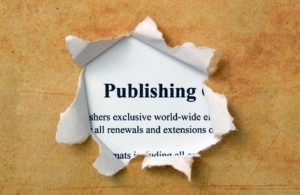The Basic Query Letter Format
For freely offered writing Resources go to RuthFordElward.com
THE BASIC QUERY LETTER FORMAT
There are certain types of information that an agent or an editor is going to want to see in the query letter. The components are almost formulaic and if you will follow the outline, you are sure to have a winning query designed to make them ask to read more of your work.
• In the first paragraph you need to lead with a hook. This can be a question pertaining to something related to your work, or it could be a line or two from the book that is particularly intriguing.
Some writers even use statistics that are designed to shock or arouse curiosity.
• The next paragraph needs to talk about the ‘nuts and bolts’ of your book.
What is the title of the book, how many pages is it.
Does it have accompanying copyright free images?
Is the book finished, and what made you decide to write this book in the first place.
• In the next paragraph list your particular expertise, writing credits, writing contest awards, or anything that makes you look as if the work you’ve just created wasn’t just a ‘hobby’.
Most agents and editors want to feel that you are taking the endeavor seriously and don’t view it as a hobby that you might abandon at any moment.
• The next paragraph needs to give them a sneak peek at the competition. If the publishing company or the agent has represented or published something that is similar in nature to your book, and it was successful, then mention their title by name.
Then mention how yours is similar to and yet different from that work.
• Lastly, thank them for their time, mention that you have more information available via the website, and mention that you would love to forward them a submission package or synopsis for a more in-depth read.
Many companies now prefer that the query letter be sent via email as opposed to snail mail.
Therefore, being a bit computer savvy is a must. Do not EVER include attachments unless they’ve specifically asked you to do so. Most would prefer that you ‘cut and paste’ your query letter into the body of the email, and then send.
Last, but not least, make sure to let them know that you are sending out your query to other agents or editors. This is called a simultaneous submission.

There was a debate not too long ago about whether an author should engage in simultaneous submissions.
The argument was that the author can’t afford to sit and give each and every publisher a 2 week window to respond to their query.
On the other hand, many publishers argued that it takes them time to adequately go through all of the proposals and that they need at least 2-4 weeks to respond to inquiries.
Many publishers dislike getting into a bidding war with another company because in the end they spend more for the book than they would if they were the only company involved.
The rule of thumb is to see if their guidelines specify no simultaneous submissions, and then to decide if that’s the publisher that would be worth giving the exclusivity to.
Sometimes it is worth the gamble if you’ve made a connection with them, or they’ve reached out to you.
However, most authors now routinely submit queries to multiple agents or publishers, and as long as you are forthcoming and up front with them about this, then there won’t be any repercussions.
Ruth Ford Elward's Blog
- Ruth Ford Elward's profile
- 9 followers



